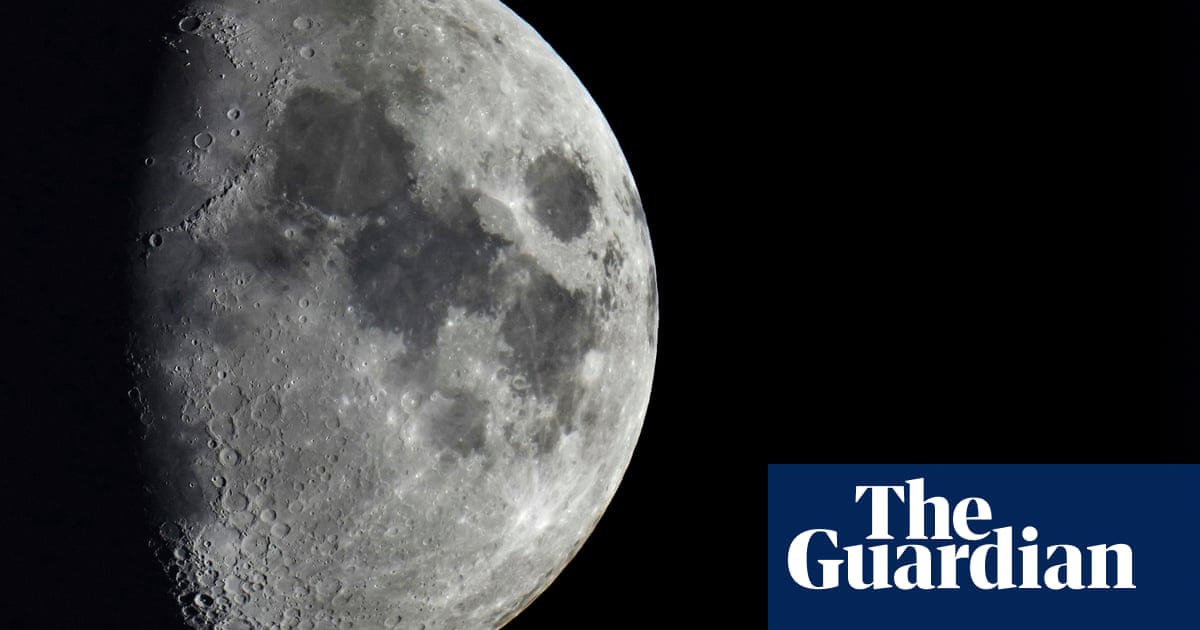
Tiny glass beads strewn across the moon’s surface contain potentially billions of tonnes of water that could be extracted and used by astronauts on future lunar missions, researchers say.
The discovery is thought to be one of the most important breakthroughs yet for space agencies that have set their sights on building bases on the moon, as it means there could be a highly accessible source of not only water but also hydrogen and oxygen.
“This is one of the most exciting discoveries we’ve made,” said Mahesh Anand, a professor of planetary science and exploration at the Open University. “With this finding, the potential for exploring the moon in a sustainable manner is higher than it’s ever been.”
More than half a century after humans last walked on the moon, Nasa and other space agencies are preparing for a return. Nasa’s Artemis mission aims to put the first woman and the first person of colour on the moon, while the European Space Agency has plans for a moon village. Both expect to draw on lunar materials to sustain their off-world bases.
Anand and a team of Chinese scientists analysed fine glass beads from lunar soil samples returned to Earth in December 2020 by the Chinese Chang’e-5 mission. The beads, which measure less than a millimetre across, form when meteoroids slam into the moon and send up showers of molten droplets. These then solidify and become mixed into the moon dust.
Tests on the glass particles revealed that together they contain substantial quantities of water, amounting to between 300m and 270bn tonnes across the entire moon’s surface.
“This is going to open up new avenues which many of us have been thinking about,” said Anand. “If you can extract the water and concentrate it in significant quantities, it’s up to you how you utilise it.”
Hints that the moon might not be an entirely arid wasteland have emerged from previous missions. In the 1990s, Nasa’s Clementine orbiter found evidence for frozen water in deep, steep-sided craters near the moon’s poles. In 2009, India’s Chandrayaan-1 spacecraft spotted what appeared to be a thin layer of water bound up in the surface layer of moon dust.
The latest research, published in Nature Geoscience, points to fine glass beads as the source of that surface water. Unlike frozen water lurking in permanently shaded craters, this should be far easier to extract by humans or robots working on the moon.
“It’s not that you can shake the material and water starts dripping out, but there’s evidence that when the temperature of this material goes above 100C, it will start to come out and can be harvested,” Anand said.
The water appears to form when high-energy particles streaming from the sun – the so-called solar wind – strike the molten droplets. The solar wind contains hydrogen nuclei, which combine with oxygen in the droplets to produce water or hydroxyl ions. The water then becomes locked in the beads, but it can be released by heating the material.
Further tests on the material showed the water diffuses in and out of the beads on the timeframe of a few years, confirming an active water cycle on the moon.
According to Prof Sen Hu, a senior co-author of the study at the Chinese Academy of Sciences in Beijing, such impact glasses could store and release water on other airless rocks in the solar system.
“This work adds to the growing consensus that the moon is more water-rich than previously thought,” said Ian Crawford, professor of planetary science and astrobiology at Birkbeck, University of London.
“This additional reservoir of lunar water could prove a useful resource in areas that are distant from the presumed polar ice deposits, but we should not over-estimate the amount of water present, which is at most 130 ml per cubic metre of lunar soil.”












